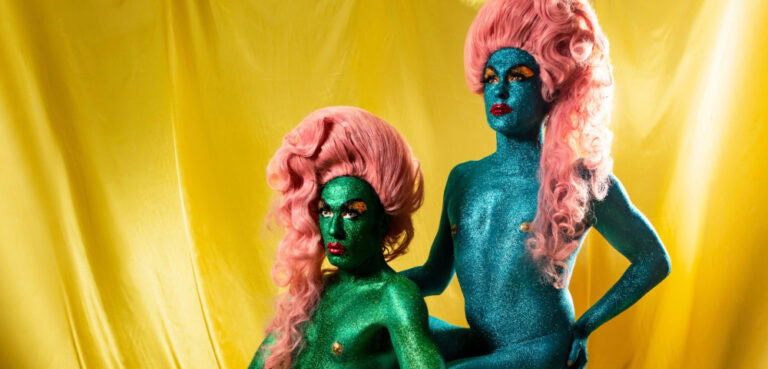
Timing, rhythm, feeling
Sport requires training, dedication, sweat and toil while dancing is just bouncing around the floor for a bit of fun -“ it can’t be a sport, can it? Oh yes, it can. Competition dance meets all the criteria.
I train six, sometimes eight hours each week with my dance partner, depending on my schedule, Beth says, and no, my dance partner is not my life partner.
For balance in her personal life it helps that her non-dancing life partner is a triathlete who also has a heavy training schedule.
Beth looks like an athlete with a trim, taut body that melds with her partner on the dancefloor to produce a sensual, flowing display of tight footwork and elegant body movement. For last weekend’s Same Sex Dance Spectacular she chose a sparkling bikini top and barely-there skirt for Latin and dramatic white for Ballroom. Good presentation and polished performances won the judges’ approval and the medals poured in.
Saturday’s Same Sex Dance Spectacular at the Randwick Labor Club is likely to become an annual event. While some dismiss dancing as a pastime and not a sport, this does not take into account the hours of training and the discipline required for peak performance. For those who feel the call, there are opportunities at all levels. Competitors in the beginners’ and advanced beginners’ divisions showed more determined expressions and less elegant footwork but the graded dancers smiled and made it all look easy.
Sue and Tish’s medals include gold. For them, dance is serious. Life and dance partners, they will compete overseas this year. We have two lessons a week with our teacher, Sue says, and we train for two or three hours on another two nights each week. We are doing it especially because of the Chicago and Montr? games.
Sue and Tish are staying with Ballroom routines in waltz, foxtrot, tango, quickstep and Viennese waltz. For New Vogue in Australian competition Sue dances with Libby, a different partner and an extra training schedule. In ballroom, Sue expects to peak for the overseas games. What we hope to do is have everything really flowing by then. We still have more choreography to include and we expect to be dancing on bigger floors so we need more steps to fill them.
More complicated choreography doesn’t always mean higher scores from the judges. In fact they will mark down if steps are poorly executed, Sue explains.
Judges are looking critically for timing, rhythm and feeling of the dance.
Sue and Tish obviously enjoy their dancing but admit that Latin is more popular than ballroom. You can dance Latin socially, but there are not many places socially where you can just whip into a waltz, Sue says.
Whatever the standard, whatever the sport, it is competition that encourages training and improvement. Australia could probably afford more events. The Gay Games 2002 event in the Sydney Town Hall was a four night sell-out and Saturday’s Spectacular was packed, but we have to wait until November for the Gay and Lesbian Australian Dance event.
More women than men compete but there are growing numbers of both and for all of them effort can be rewarded. Virginia, one of Spectacular’s organisers, says, The nerves, excitement and all the other feelings you get are wiped away when the audience cheers and claps for their favourites and you come off the floor feeling as though you have danced to the best of your ability.
From small beginnings, same-sex dancing has grown in Australia in the past 15 years. Now there are same-sex dance studios in Melbourne, Adelaide, Perth and New Zealand as well as Sydney. Dancers do it for fitness, relaxation, to meet new people and develop their confidence. And some get hooked: for them bouncing around the floor means the training, dedication, sweat and toil that any competitive sport would bring.
Now then, class: Forward, side together; forward, side -¦
To find out more about same-sex dancing, phone Virginia 0409 596 330, David 0418 586 674, or email [email protected].









